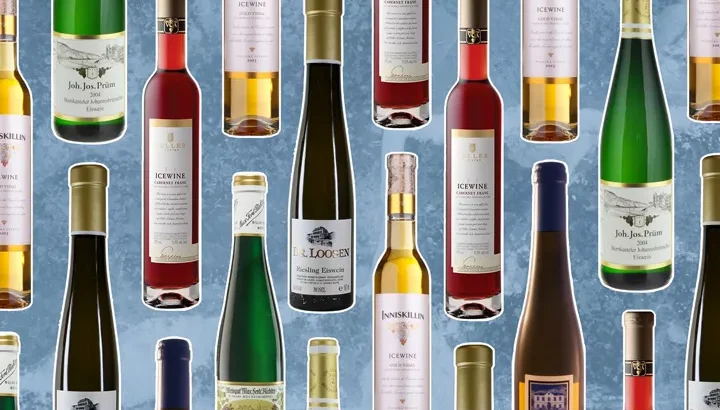If you’re a wine enthusiast, you’ve probably come across the age-old debate of white wine vs. red wine or heard whispers of the luxurious ice wine. Whether you’re a seasoned connoisseur or just someone curious about these delightful beverages, you’re in for a treat. In this article, 하이퍼블릭, 쩜오, 텐카페 추천 we’ll embark on a flavorful journey to understand the differences between white wine, red wine, and ice wine. So, pour yourself a glass, sit back, and let’s dive into the world of wine!
Table of Contents
White Wine: The Crisp and Refreshing Elixir
White wine, with its light and transparent appearance, is often associated with freshness. Made from green or yellow grapes, the skins are typically removed during fermentation, giving it a pale color. The absence of grape skins also contributes to its crisp taste, which can range from bone-dry to sweet.
Key Points:
- White wine is made from green or yellow grapes.
- It has a refreshing and crisp taste.
- Varieties include Chardonnay, Sauvignon Blanc, and Riesling.
Red Wine: Bold and Complex
Red wine, on the other hand, gets its rich color from fermenting the juice along with grape skins. This process also imparts complex flavors and aromas, making red wine a favorite among wine enthusiasts. It’s known for its boldness and can range from light-bodied to full-bodied, depending on the grape variety.
Key Points:
- Red wine is made by fermenting grape juice with skins.
- It has bold and complex flavors.
- Varieties include Cabernet Sauvignon, Merlot, and Pinot Noir.
Ice Wine: The Liquid Gold
Ice wine is a true gem among wines. It’s made from grapes that have frozen on the vine, which concentrates the sugars and flavors. The grapes are harvested in the dead of winter when temperatures are below freezing. This unique process results in a sweet nectar with a perfect balance of acidity.
Key Points:
- Ice wine is made from frozen grapes.
- It’s incredibly sweet and balanced.
- Varieties include Vidal Blanc and Riesling Ice Wine.
The Winemaking Process
To truly appreciate the differences between these wines, it’s essential to understand their winemaking processes. While white wine involves the removal of grape skins, red wine embraces them, and ice wine relies on frozen grapes. These methods significantly impact flavor, color, and sweetness.
Key Points:
- White wine removes grape skins for a lighter color.
- Red wine ferments with grape skins for a deeper color and complexity.
- Ice wine uses frozen grapes for concentrated sweetness.
Tasting Notes: What to Expect
When you take a sip of white wine, you’ll likely encounter refreshing citrus, apple, or floral notes. Red wine, on the other hand, might surprise you with dark fruit flavors like cherry, plum, or even hints of chocolate. Ice wine is an explosion of sweetness with flavors of honey, apricot, and peach.
Key Points:
- White wine offers citrus and floral notes.
- Red wine boasts dark fruit and earthy flavors.
- Ice wine is a burst of sweetness with fruity undertones.
Food Pairing: Enhancing the Experience
Pairing wine with food can elevate your dining experience. White wine complements light dishes like seafood and salads, while red wine pairs beautifully with red meats and rich sauces. Ice wine is a dessert on its own but can also be enjoyed with creamy desserts or blue cheese.
Key Points:
- White wine pairs with seafood and salads.
- Red wine enhances red meats and rich sauces.
- Ice wine is a delightful dessert wine.
Storage and Aging
Proper storage and aging play a crucial role in wine quality. White wine is typically best when consumed young, while red wine often benefits from aging, which softens its tannins and enhances complexity. Ice wine, with its high sugar content, can age gracefully for decades.
Key Points:
- White wine is best consumed when young.
- Red wine often improves with aging.
- Ice wine can age gracefully due to its high sugar content.
Popularity and Varieties
The popularity of these wines varies by region and personal preference. White wine is often enjoyed in warm climates, while red wine warms the soul during colder months. Ice wine is a rare delicacy, cherished for special occasions.
Key Points:
- White wine is popular in warm climates.
- Red wine is favored in colder regions.
- Ice wine is a rare and special treat.
Conclusion
In the world of wine, there’s something for everyone. Whether you prefer the crispness of white wine, the complexity of red wine, or the decadence of ice wine, each has its unique charm. So, the next time you raise your glass, savor the experience and appreciate the journey that brought that delightful elixir to your lips.
